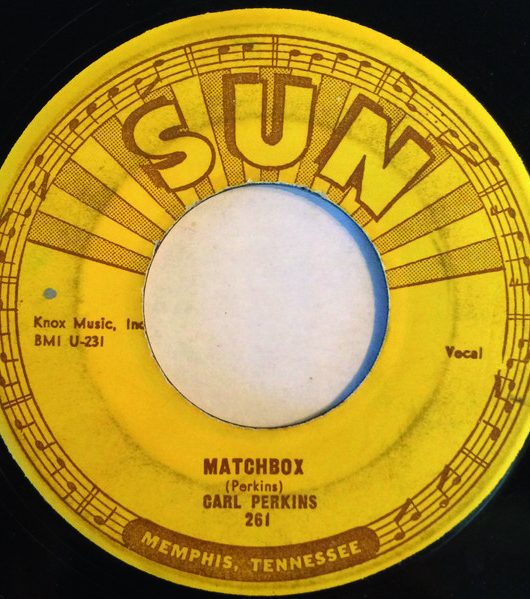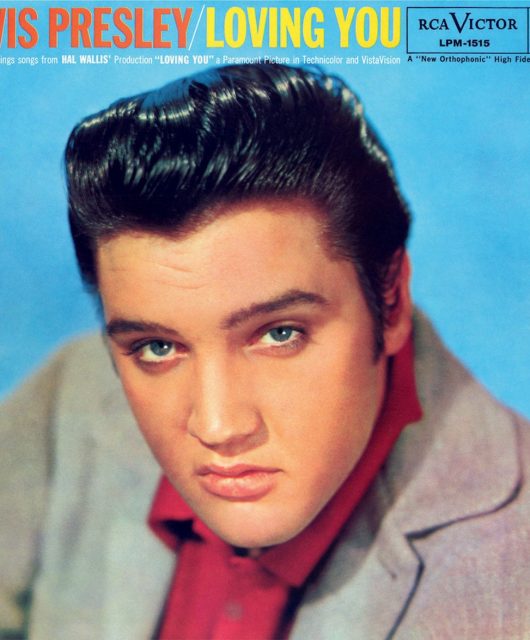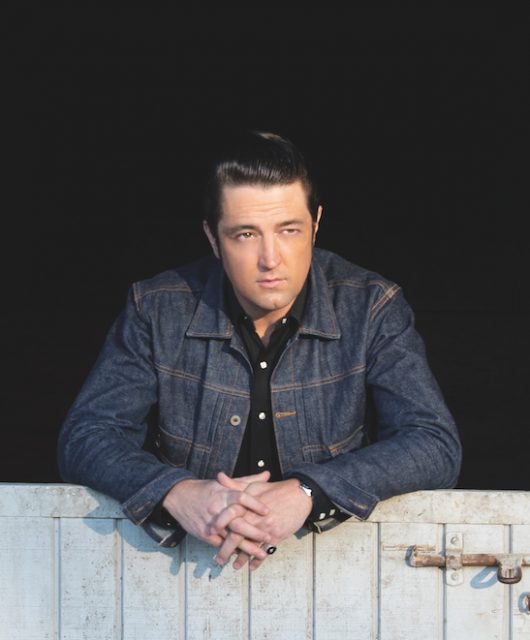He started as out as The Singing Bartender and became the Boss of the Blues. For many, though, whether as Big Joe or just plain old Joe Turner, the iconic singer from Kansas City will always be regarded as a central figure in the development of rock’n’roll. We take a look at his second album for the Atlantic label… By Jack Watkins
In April 1954, Joe Turner’s Shake, Rattle & Roll soared to the upper reaches of the US R&B charts. A couple of months later, Bill Haley And His Comets took their own version into the pop Top 10 and went on to enjoy a level of success that the amiable bluesman from Kansas City could only have dreamt about.
However, time has been kind to the music of Joe Turner. While some have tried to diminish the greatness of Haley, Turner rightly has a place alongside him as one of the originators of rock’n’roll.
Ironically, although Haley detractors never fail to mock his middle-aged appearance, Turner was much older. At 6ft 2ins and weighing over 300 pounds, he was 42 at the time of recording Shake, Rattle & Roll, whereas Haley was a ‘youthful’ 28. While Haley made his first country or western swing-styled recordings in the late 1940s, Turner, a performer in the Prohibition era, had been cutting records since the tail end of 1938 – Roll ’Em Pete/Goin’ Away Blues on the Vocalion label with pianist Pete Johnson, released in early 1939.
Yet, whereas Haley had deliberately started shaping his songs for the youth market by the early 1950s, when a new generation of fans discovered what they hailed as Turner’s ‘rock’n’roll’ a few years later, he responded by telling Whitney Balliett in the New Yorker that: “It wasn’t but a different name for the same music I been singing all my life.”
Whether you call it ‘rock’ or a form of up-tempo jazz-blues crossover, Turner’s material had always been grown-up fare, My Gal’s A Jockey, from 1946, being a case in point.
So it’s no surprise that his second album for Atlantic, released by the label under the Rock & Roll banner in 1957 (others were by Ruth Brown, Ray Charles, Clyde McPhatter’s The Drifters, LaVern Baker and Ivory Joe Hunter), contains no kiddie music.
The album is amassed from some of Turner’s Atlantic singles released between 1951 and 1956. It works well because it showcases the fact that he was no one trick pony. Turner and Pete Johnson had been known as the Boogie Woogie Boys and played a large part in the growth in popularity of the boogie style in the 1940s. But slow blues had always been a part of the singer’s repertoire, too.
Chains Of Love, Turner’s first Atlantic single, fitted into the latter category. According to Jerry Wexler, the song was a rewrite of Mecca Flat Blues, undertaken by Atlantic boss Ahmet Ertegun, under the name ‘Nugetre’ (Ertegun spelt backwards). Pianist Van ‘Piano Man’ Walls, something of an eccentric who dressed like Sherlock Holmes, received a co-credit for his beautiful, mood-setting work on the ivories.
The song provided the perfect vehicle for Turner’s majestic baritone, which Nick Tosches once described as “oceanic and commanding”. But while Turner had established a reputation for roaring the blues, on a song like Chains Of Love the undercurrent of melancholy in his voice comes through and is deeply affecting. This feeling is reinforced by the B-side, on which he sings a slow ballad loaded with regret, After My Laughter Came Tears. The song dates back to the 20s and is not included on Rock & Roll. While it would be exaggerating to say Turner was an artist of great variety, listening to performances on songs like this, it’s plain the description ‘blues shouter’ doesn’t do justice to his capabilities.
An immediate hit, riding to No.2 on the US R&B charts in 1951, only the Dominoes’ Sixty Minute Man denied Chains Of Love top spot. It went on to become a blues standard, but other than when Bobby Bland, a singer with a seldom paralleled gift for phrasing, sung it on Duke in 1969, no-one approached the simple solemnity and heartbreak of Turner’s version (Joe also re-recorded it in a more pop-flavoured style for Atlantic in 1960). Many simply didn’t have the chops. Dorsey Burnette made a respectable job of it on the celebrated Johnny Burnette And The Rock & Roll Trio album. At least it was better than Pat Boone’s effort, which still somehow managed to get into the US Top 10.
Sweet Sixteen, from 1952, was another slow blues, a long way in spirit from Chuck Berry’s jaunty rocker of later years, Sweet Little Sixteen. Backed by three saxes and a trumpeter, as well as Walls on piano, although lacking the X factor of Chains Of Love, it was another success on the R&B charts (No.3). In May 1953, Atlantic sent Turner to Cosimo Matassa’s studio in New Orleans, partly because it was the nearest facility to where Joe, who preferred life
on the road to the studio, was at the time. Two tracks emerged from the session. While Crawdad Hole was a fairly standard blues set to a beat, Honey Hush was one of Turner’s greatest Atlantic jump numbers. Loose to the point of ramshackle, it was ‘written’, or more likely improvised on the spot, by Turner, who was illiterate and embarrassed by the fact – the song is credited to his wife Lou Willie Turner. Fats Domino was on piano, and a raging tenor sax break by Lee Allen melded into a mellower one from Red Taylor’s baritone. Turner led a call-and-response with backing singers on variations of the Lone Ranger cry, “Hi-yo– hi-yo-Silver!”
Honey Hush is another song that became a standard, though not entirely because of Turner. Whereas the Rock’n’Roll Trio’s Chains Of Love just rated a pass, they utterly transformed Honey Hush into an all-time rockabilly classic. While Jerry Lee Lewis and Chuck Berry did the song in their own styles, when British rockers like Screaming Lord Sutch & The Savages, The Houseshakers, Shakin’ Stevens And The Sunsets, and The Jets retuned to the song in later years, it was obviously with the Rock’n’Roll Trio’s version in their minds.
Oke-She-Moke-She-Pop, which went on the flipside of the blues shuffle TV Mama, emerged from an October 1953 session in Chicago with Elmore James on electric guitar. James’ rippling signature slide riff, endlessly reproduced to the point of tedium on so many records in his short career, is instantly recognisable on TV Mama (not on the LP), a number dripping with innuendo.
Atlantic were increasingly looking to position Turner in the growing R&B market as the 1950s rolled on, and it was the company’s only black staff member, writer/arranger/producer Jesse Stone, under his alias of Charles E. Calhoun, who came up with Shake, Rattle & Roll. Under instructions to pen an up-tempo number for a Turner session in New York in early 1954, Stone, having already written the Drifters’ R&B smash Money Honey, rustled up the cheeky lyric. He also played piano, joining Ahmet Ertegun, Jerry Wexler and Turner in singing the chorus on the recording. Walls threaded the song together with an insistent boogie piano riff, while drummer Connie Kay thumped away on the off-beat. Sam ‘The Man’ Taylor honked away on tenor sax. Turner’s singing was expressive as ever, but the great fascination is that the song never deviates from a straight midtempo groove, but still creates maximum excitement.
The follow-up, Well All Right sounds like a throwback to an earlier era, but Kay’s backbeat is heavy, and there is some blasting sax from Taylor. Although there was generally always a guitarist on the Turner Atlantic sessions, they were still brass and wind instrument-led. A case in point is Flip, Flop And Fly, which has a trumpet riff, but feels like a step further into rockin’ territory. “When I get the blues, I get me a rockin’ chair,” sings Turner, co-credited with Jesse Stone on writing. There’s no messing about with a country blues shuffle here, but the sax solo by Al Sears is a jazz-R&B hybrid. Hide And Seek played on a nursery rhyme lyric, much like Bill Haley was doing by this time, but in a far more grown-up style.
Recorded in New York in November 1955, The Chicken And The Hawk (Up, Up And Away) was a Leiber and Stoller song, with riffing saxes, a boogie piano, and incessant backbeat. Noticeably more modern in treatment is Corrine Corrina, an old song that Turner had recorded in 1941, with a ‘modern’ guitar intro and vocal backing from the Cookies. It gave Turner his first of only two entries on the Billboard Hot 100 – No.41 in 1956. (The other was with a re-recording of Honey Hush, No.53 in 1959.) Turner never made the charts in Britain.
Boogie Woogie Country Girl was written by Doc Pomus, who idolised Turner. He’d already penned Don’t You Cry and Still In Love for him, but whereas those were slow, lovelorn blues numbers, Boogie Woogie Country Girl is a rock’n’roll steamroller. It doesn’t compromise the Turner style, retaining the saxes and rolling piano chords. The snappy beat, driven by the slapped bass and drums, the hep cat references to squares and phrases like “dig what I mean” were perhaps concessions to the times but Joe’s shouts of, “Play it, man” and “let’ em roll,” and his screams as the piano plays out the track sound totally unforced. Midnight Special Train, a song beloved by folk singers, was given a rock’n’roll treatment similar to Corrine Corina. It rounded off an entertaining album.
“Rock and roll would never have happened without him,” Doc Pomus told Rolling Stone on Turner’s death in 1985. “Not in all rock’n’roll has there been another singer like him,” wrote Nick Tosches. This album offers ample proof of that.






